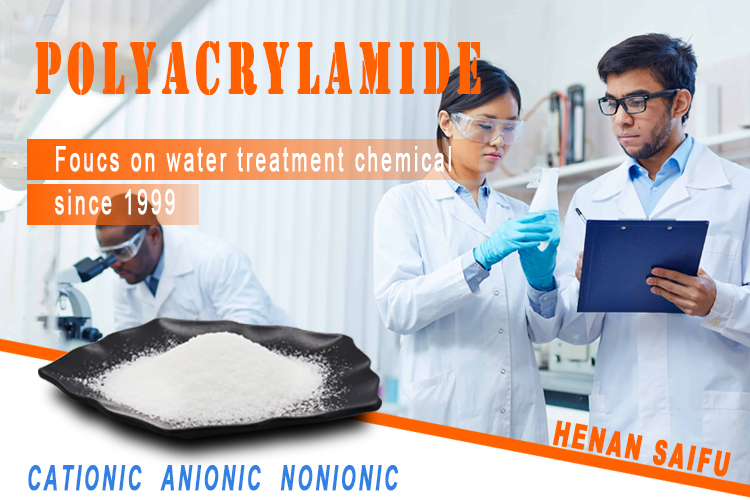E-mail: admin@saifutd.com Tel: 86-13598853789
E-mail: admin@saifutd.com Tel: 86-13598853789
news
As winter approaches and the temperature gradually drops, some special matters need to be paid attention to when using and dosing polyacrylamide. The following will introduce in detail the properties, usage, precautions, etc. of polyacrylamide.

1. Properties of polyacrylamide
Polyacrylamide is a high molecular polymer that has the functions of flocculation, adsorption, sedimentation, and interception. It is widely used in water treatment, petroleum, coal, papermaking, textile, agriculture and other fields. In winter, due to lower temperatures, the dissolution rate of polyacrylamide will slow down, so special attention needs to be paid to its use and dosing methods.
2. How to use polyacrylamide
①. Dissolution concentration: As the temperature decreases in winter, the dissolution rate of polyacrylamide slows down, so its dissolution concentration needs to be appropriately increased. It is generally recommended to control the concentration between 0.1% and 0.3%.
②. Dissolution temperature: Increasing the dissolution temperature can speed up the dissolution rate. You can heat the water temperature to 50-60 degrees Celsius and stir at the same time to speed up the dissolution.
③. Stirring speed: Proper stirring speed can speed up the dissolution of polyacrylamide. It is recommended to use a blender to stir it thoroughly.
④. Dosing amount: Determine the amount of dosing according to the actual situation. In winter, due to the higher sludge concentration, the dosage can be appropriately increased.
3. Precautions for dosing polyacrylamide in winter
①. Pay attention to the dissolution temperature: As the temperature drops in winter, you need to pay attention to increasing the dissolution temperature to speed up the dissolution rate. However, the temperature should not be too high, otherwise it will destroy the molecular structure of polyacrylamide and affect its flocculation effect.
②. Pay attention to the dosage: the sludge concentration is higher in winter, so the dosage can be increased appropriately. However, the dosage should not be too much, otherwise it will cause waste and affect the water quality.
③. Pay attention to the stirring speed: Proper stirring is required during the dissolution process to speed up the dissolution speed of polyacrylamide. However, the stirring speed should not be too fast, otherwise the molecular structure of polyacrylamide will be destroyed and its flocculation effect will be affected.
④. Pay attention to the storage method: Polyacrylamide is a high molecular polymer and needs to be kept away from direct sunlight and high temperature environments. During storage, it needs to be placed in a dry, cool, ventilated place, away from moisture and direct sunlight.
⑤. Pay attention to safety: You need to pay attention to safety issues during use. Polyacrylamide is a high molecular polymer. Although it is non-toxic and harmless, long-term exposure has certain effects on the skin and respiratory system. Therefore, you need to pay attention to protective measures during use, such as wearing gloves, masks, etc.
⑥. Pay attention to the impact of water quality: Different water quality will have an impact on the use of polyacrylamide. For example, high hardness water quality will affect the flocculation effect of polyacrylamide; acidic water quality will destroy the molecular structure of polyacrylamide and affect its flocculation effect. Therefore, you need to pay attention to the impact of water quality during use, and pretreat the water quality if necessary.
⑦. Pay attention to equipment maintenance: You need to pay attention to equipment maintenance during use. For example, regularly check whether the mixer is operating normally; regularly clean the inside of the medicine tank, etc. This can ensure the normal operation of the equipment and improve work efficiency.
In short, the above matters need to be paid attention to when using polyacrylamide in winter to ensure its effectiveness and safety. At the same time, parameters such as dosage and dissolution concentration need to be determined according to the actual situation to achieve the best treatment effect.
 ?x-oss-process=style/400x300" class="attachment-thumb-news size-thumb-news wp-post-image" />
?x-oss-process=style/400x300" class="attachment-thumb-news size-thumb-news wp-post-image" />
Henan Saif New Materials Co., Ltd.'s first employee professional skills training program for 2026 concluded successfully today. The training, which began on January 5th and lasted two weeks, utilized a blended online and offline approach, ensuring participation from employees across all departme

Our company successfully completed the shipment of an urgent order for polyacrylamide.Shipping Date: August 25, 2025Recently, a batch of polyacrylamide (PAM) products of a specified model completed final inspection at our finished goods warehouse and was loaded onto a truck for shipment to a well-kn